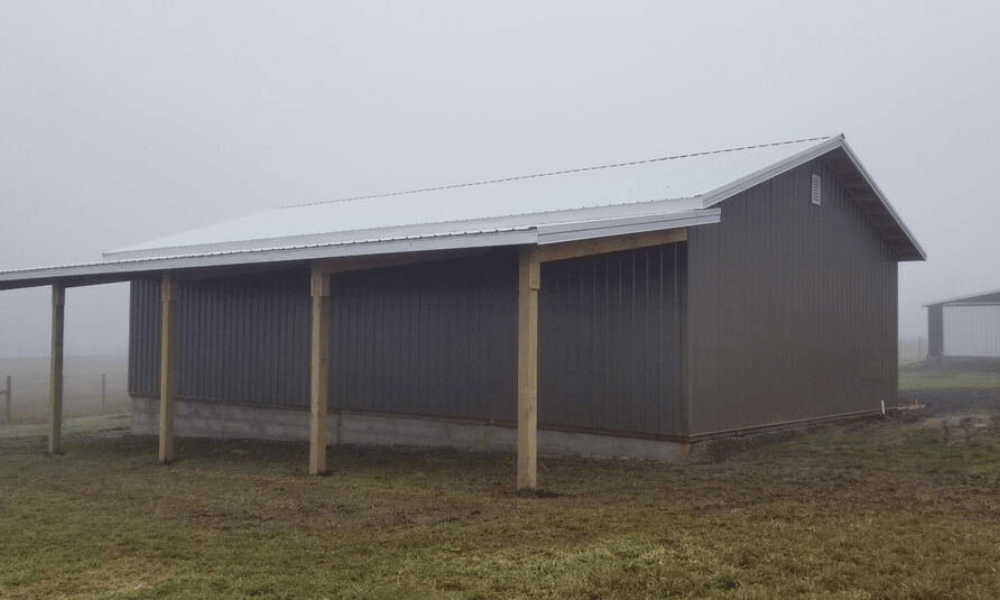Building a new shed can be an exciting project, whether you're looking to store tools, create a workspace, or even set up a cozy hideaway. However, if you’re not careful, your dream shed could turn into a nightmare. There are several common pitfalls that new shed owners fall into. In this comprehensive guide, we'll explore the best practices for success and outline what not to do with your new shed. From planning and construction to maintenance and usage, we've got you covered.
What Is a Pole Barn Garage?
A pole barn garage is a type of building that is constructed using poles as the primary structural element. These structures are often used for storage purposes but can also serve as garages or workshops. The appeal of a pole barn garage lies in its versatility, cost-effectiveness, and relatively quick construction time. So why might you consider building one alongside your new shed?
Why Consider a Pole Barn Garage?
Cost-Effective: Compared to traditional garages, pole barns typically require less material and labor. Versatile Uses: You can use them for vehicles, equipment storage, workshops, or even as additional living space. Quick Construction: With fewer materials needed, constructing a pole barn can often be completed faster than other types of buildings.Planning Your Shed: What Not to Do
Before you even break ground on your new shed, proper planning is vital. Here are some common mistakes to avoid.
Ignoring Local Regulations and Permits
Many homeowners make the mistake of thinking they don’t need permits for their sheds. Failing to check local zoning laws can lead to fines garage builders near Eugene or having to tear down your structure altogether.
Research Local Codes Before Building
- Check with your local municipality for any restrictions. Obtain necessary permits before starting construction.
Choosing the Wrong Location
Placing your shed in an inconvenient spot can create long-term headaches.
Consider Accessibility and Drainage
- Make sure it's easily accessible from your home. Avoid low-lying areas where water collects.
Design Flaws: What Not to Do with Your New Shed!
Designing your shed is just as crucial as the physical building process itself.
Neglecting Ventilation Needs
Not including proper ventilation can lead to moisture buildup inside the shed.
How To Ensure Proper Ventilation
- Include windows or vents in your design. Consider installing exhaust fans if you're storing sensitive equipment.
Overlooking Electrical Needs
If you plan on using electricity in your shed, make sure it’s planned out correctly from the start.
Electrical Planning Tips
- Consult with an electrician about installation. Plan outlets based on intended use (lighting vs. tool charging).
Construction Mistakes: Building Your Shed Right
Once you've got the design down pat, it's time to build! But beware—there are numerous mistakes that can sabotage your efforts.
Cheap Materials Might Cost More Later On
Using subpar materials might save you cash upfront but will likely lead to higher repair costs down the road.
Invest Wisely in Quality Materials
- Opt for weather-resistant wood or metal siding. Don’t skimp on roofing; it’s crucial for protecting your investment.
Rushing Through Construction Process
Impatience can lead to shoddy craftsmanship that you'll regret later on.
Take Your Time During Construction Steps
- Follow each step carefully; don’t skip any. Double-check measurements before cutting materials.
Shed Maintenance: Best Practices for Success!
Once you've built your shed successfully, maintaining it is just as important as construction.
Ignoring Regular Inspections and Maintenance Tasks
Just because something seems fine doesn't mean it is!
Schedule Routine Inspections Every Season
Check for signs of wear or damage. Clean gutters and drainage systems regularly.Failing To Keep It Organized Inside
A cluttered space makes it tough to find what you need when you need it!
Implement Storage Solutions Early On
- Use shelves and pegboards effectively. Label boxes for easy identification of contents.
Maximizing Space: What Not To Do with Your New Shed!
One common issue many homeowners face is underutilizing their available space.
Piling Everything in One Corner Makes No Sense!
It’s tempting just to shove things into whatever spot seems easiest at the moment—but trust us; that's not smart!
Create Zones Based On Usefulness
Gardening tools in one section Seasonal decor in anotherConclusion
Building and maintaining a new shed—or even integrating a pole barn garage—can be highly rewarding when done correctly. It allows you extra space while enhancing property value if done right! By avoiding the common pitfalls outlined above—like ignoring regulations or choosing poor materials—you’ll ensure that both your new shed and any other structures like a pole barn garage offer years of reliable service without unnecessary headache!
FAQ Section
1. What should I include in my shed's design?

- Consider functionality—think about what you'll store or do inside, then design accordingly (shelves, workbenches).
2. How do I maintain my shed throughout the year?
- Schedule seasonal inspections focusing on roof integrity and potential moisture issues; keep storage organized too!
3. Can I build my own pole barn garage?
- Yes! With some DIY skills and knowledge of local codes/permits; however consulting professionals may help streamline this process more efficiently!
4. What's the best way to insulate my new shed?
- Use foam boards between studs before installing drywall which provides good thermal resistance while minimizing condensation risks inside!
5. How do I prevent pests from invading my shed?
- Seal any gaps around doors/windows; also consider natural deterrents such as peppermint oil sprinkled around entry points!
6. Is electrical installation difficult within these types of structures?
- It depends; basic installations may be doable by yourself if following guidelines closely—but always consult licensed electricians when unsure about safety codes/compliance measures needed beforehand!
With all this information at hand now let’s get started creating those dream spaces together—just remember these tips along way so everything goes smoothly where possible! Happy building!